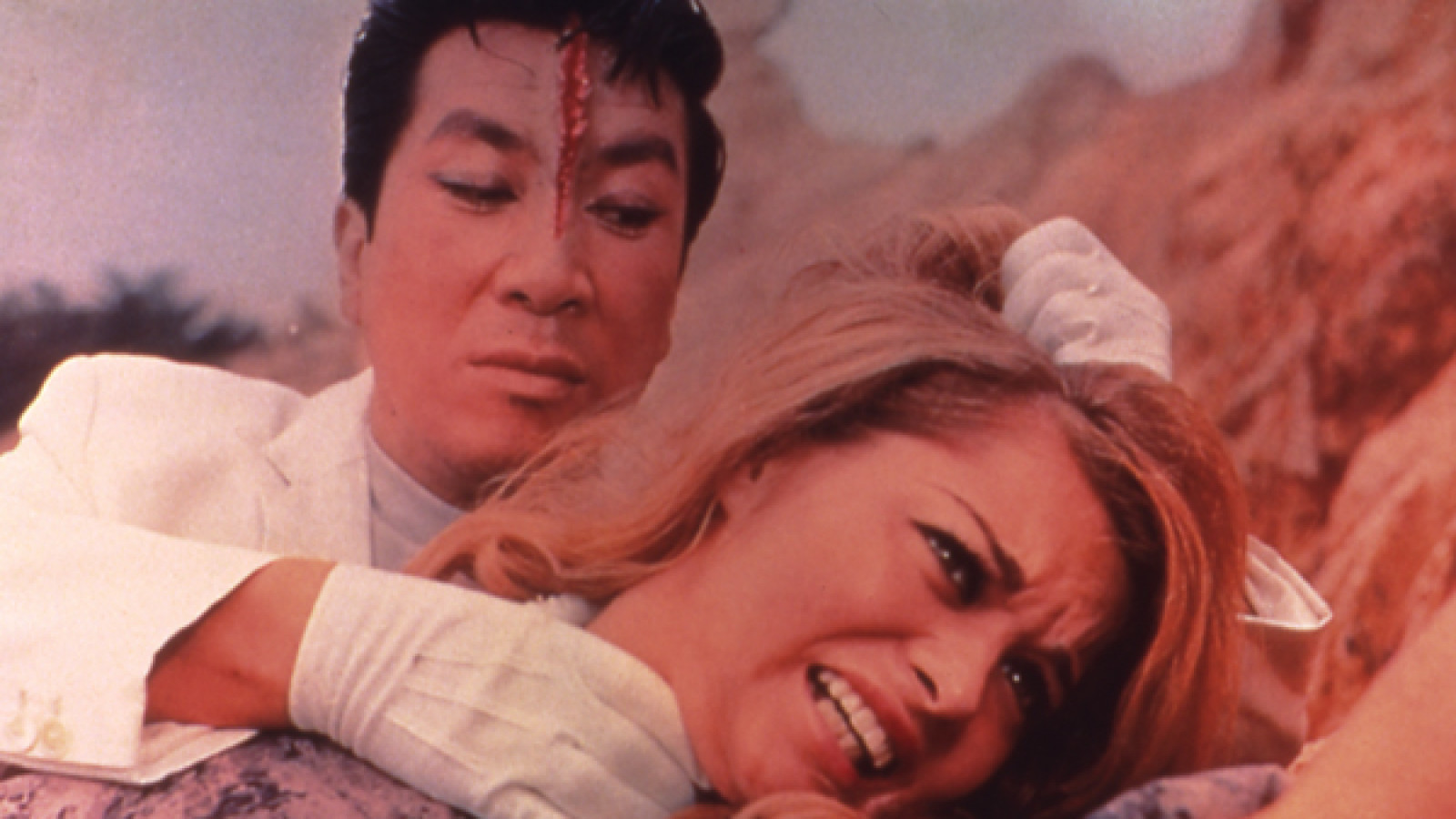Goke, the Bodysnatcher from Hell - Kyuketsuki Gokemidoro

We’re showing Goke at midnight because that is when your power to resist Goke is weakest. We’re showing Goke at midnight because that is when you won’t be able to fight back as this unsettling, eerie, candy-colored creepshow crawls into your mind and lays its eerie eggs. The way Boxer’s Omen messes with your gag reflex, Goke messes with your soul. It’s like a bad dream, a hallucination, Hausu on Klonopin. Heavily influenced by Mario Bava, director Hajime Sato created a movie that haunted cinema screens, and defenseless brains, like a restless ghost.
A toy jet liner cuts through blood-red skies (a shot Quentin Tarantino admits he lifted for Kill Bill vol. 1). Inside are the dregs of humanity: a nasty shrink, an arms dealer, a crooked politician, a hitman, a widow, and a terrorist. In a confluence of unhappy accidents—suicide birds crash into the plane, a terrorist hijacks it, a UFO attacks it—they crash into a rocky landscape that looks less like Japan and more like the Ninth Circle of Hell. Item #1 on the agenda: everyone turns on one another like a bunch of rabid dogs. Item #2: check out where that killer UFO landed. Big mistake. Inside the UFO is a bit of extraterrestrial snot that opens up a juicy, red, Cronenbergian slit in conveniently located foreheads, and slides inside to hide.
In Goke, the world seems to be ending but no one’s sure why. At a time when Japan was trying to prove to its neighbors that it was a happy shiny country, where the economy was strong and kids could have fun, fun, fun all day long and no one was going to commit war crimes ever again, Goke somehow slipped out. Carved onto the screen in bold blocks of eye-crushing primary colors, all acid oranges, atomic yellows, and chlorine blues, it’s as nihilistic and sharp-edged as something Rod Serling would have written right before stubbing out his last cigarette and slipping a noose around his neck.






